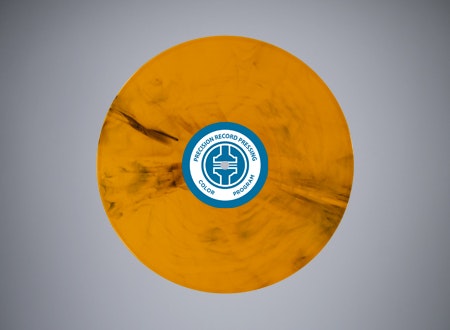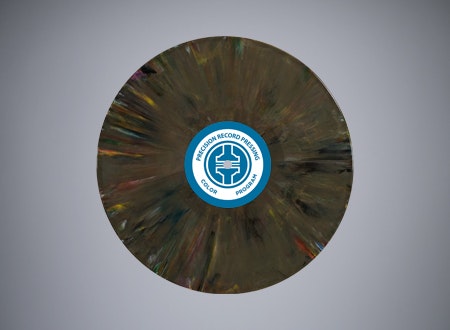Guide: Multi-Color Vinyl Effects Explained
By Simon Daley
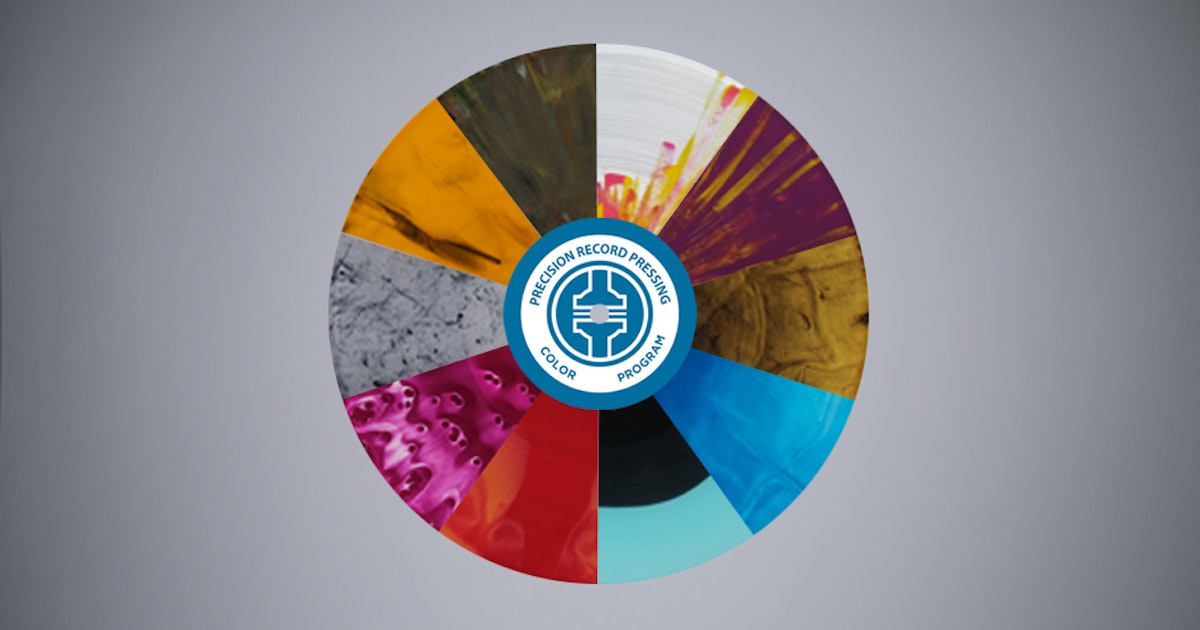
Considering a multi-color effect for your next project? We’ve put together the ultimate dos and don’ts guide for combining vinyl colors, to ensure you achieve the best results.
Precision Record Pressing is proud to offer one of the largest selection of vinyl colors and effects in the industry. This abundance of choice however can sometimes be overwhelming and leave even our most experienced clients wondering how certain effects work. We’ve outlined below in detail how to achieve the best results for our most popular multi-color effects and which color combinations should be avoided.
Splatter
By far our most regularly ordered effect is Splatter. It is also one of the most cost-effective ways of adding a unique touch to your project.
We have found that opaque vinyl compound splatter produces the best results on a contrasting base color. For example Silver (O11) splatter on a Grey (O13) base might not produce the most striking results, but then again may be exactly the subtle effect that you’re looking for. For the most vibrant results consider combining bright opaque colors with a Clear (T2) base. Also available as splatter colors are our Neons (N1-N6) as well as Green glow in the dark (G1).
You can also request Heavy Splatter for an even more impressive effect, this involves the press operator covering both sides of the vinyl puck with splatter compound.
Note: Translucent splatter is possible but not advised unless paired with a light base color. Adding splatters to a White (O2) base can sometimes lead to the splatter color appearing subtly washed out.
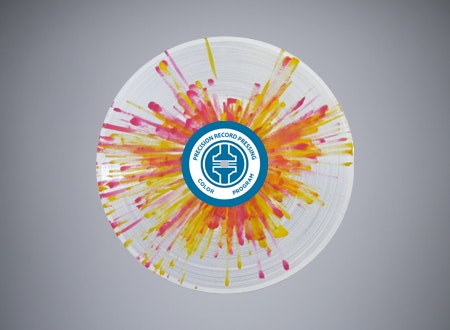
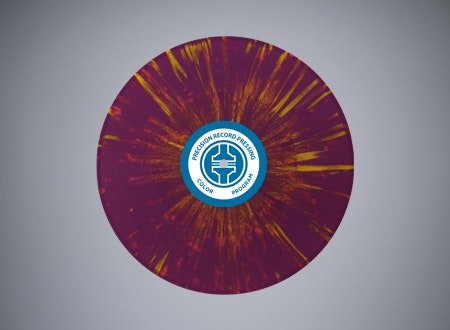
Galaxy
Galaxy is split into two distinct effects, Translucent and Opaque. Both offer a blended effect but the results are visibly different.
Translucent Galaxy offers two perspectives. When placed on a turntable it almost appears like a glossy opaque record, however when held up to a light source it offers an almost liquid-color effect giving greater depth to the surface. Translucent Galaxy is achieved by combining 1 translucent color (except T2 & T15) of your choosing with 1 opaque color (except G1, O9, O15, O22, O23 and O24).
Opaque Galaxy produces the most faithful results when two familial colors are combined to create a complimentary tertiary color. For example Tangerine (O7) and Lemon (O21) can be combined to create an effect with grades of yellow, light and dark orange. However combining Gold (O16) and Aqua (O19) for example, may result in a muddied effect without much color definition.
Note: Galaxy is only available for 12” projects. Some colors are incompatible with the Galaxy effect, these include: G1, O9, O15, O22, O23, O24, T2, T15.
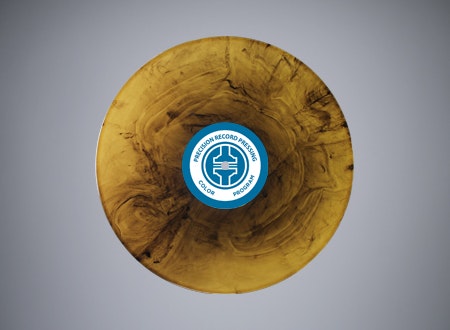
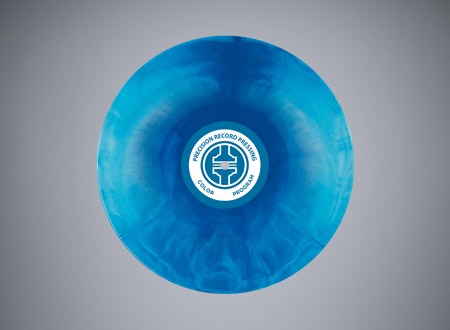
A Side B Side
There are very few rules when it comes to our A Side B Side effect. Customers often combine an opaque color with a translucent color, or two opaque colors. For best results we advise against selecting two translucent colors for this effect.
From our experience we have also learned that some color compounds (eg. White/O2) blend less than others. This can be mitigated by reducing the puck size during pressing. If you desire an A Side B Side effect with one color more dominant than the other(s), we can also alter the puck sizes to achieve this. Please speak to your account manager if you have specific requirements.
Note: It’s possible to add a splatter effect to your A Side B Side, however doing so may reduce the visual impact of the overall effect.
Color In Color
Similar to our A Side B Side effect, the rules surrounding Color In Color are loose and often broken to achieve interesting and unexpected effects.
For optimal results with a defined outline of the middle color, we advise combining a light translucent color for the base with a dark opaque color for the effect.
However customers often pair two opaques together or a light translucent base with a light opaque color for a subtle and less-defined effect. Your account manager should advise you if the two colors chosen are incompatible and will result in a poorly executed effect.
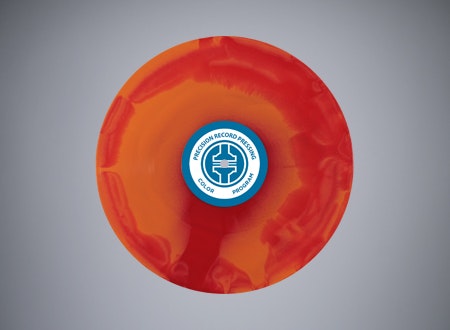
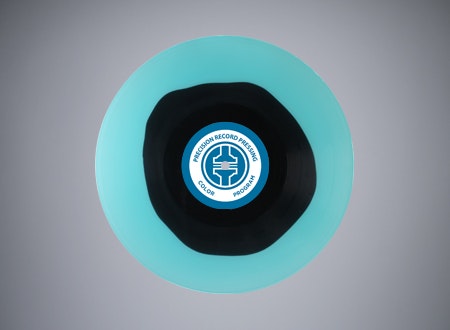
Ghostly
Our popular Ghostly effect can be achieved by combining a base of Clear (T2) with another translucent color of your choosing.
Note: The Ghostly effect can often be closely replicated using a selection other than Clear (T2) as one of your base colors, however this should be considered experimental and results may vary. Adding a third color to your effect is also possible, but may reduce the visual impact of the overall effect.
Marble
Some pressing plants call this effect “whisps”, some call it “swirls” but we call it Marble!
Marble is available in eight colors and is best suited to being paired with our translucent colors or a light opaque like White (O2). The marble colors are as follows; M1 – White, M2 – Black, M3 – Red, M4 – Blue, M5 – Purple, M6 – Blood Red, M7 – Green, M8 – Clear Pink.
Note: It’s also possible to combine several marble colors, however caution is advised as they may blend with each other as well as the base color to produce undesired effects.
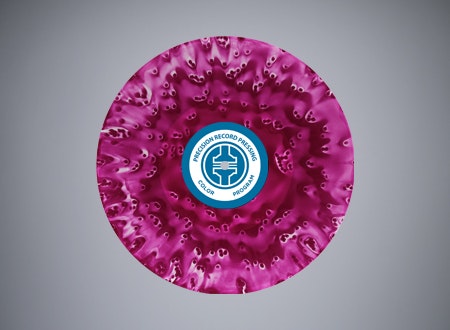
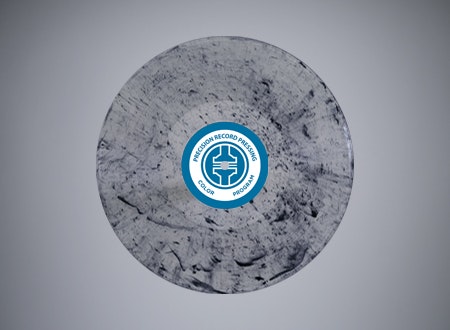
Random Color
Exactly as it sounds, this option allows our pressing team to choose whatever color compound they have on hand for your records. They often have an excess of multiple colors and so will blend them together for a truly unique effect. This option is great if you want every record to have a subtly distinctive look.
Note: An added bonus is that Random Color is the same price per unit as choosing black vinyl.
